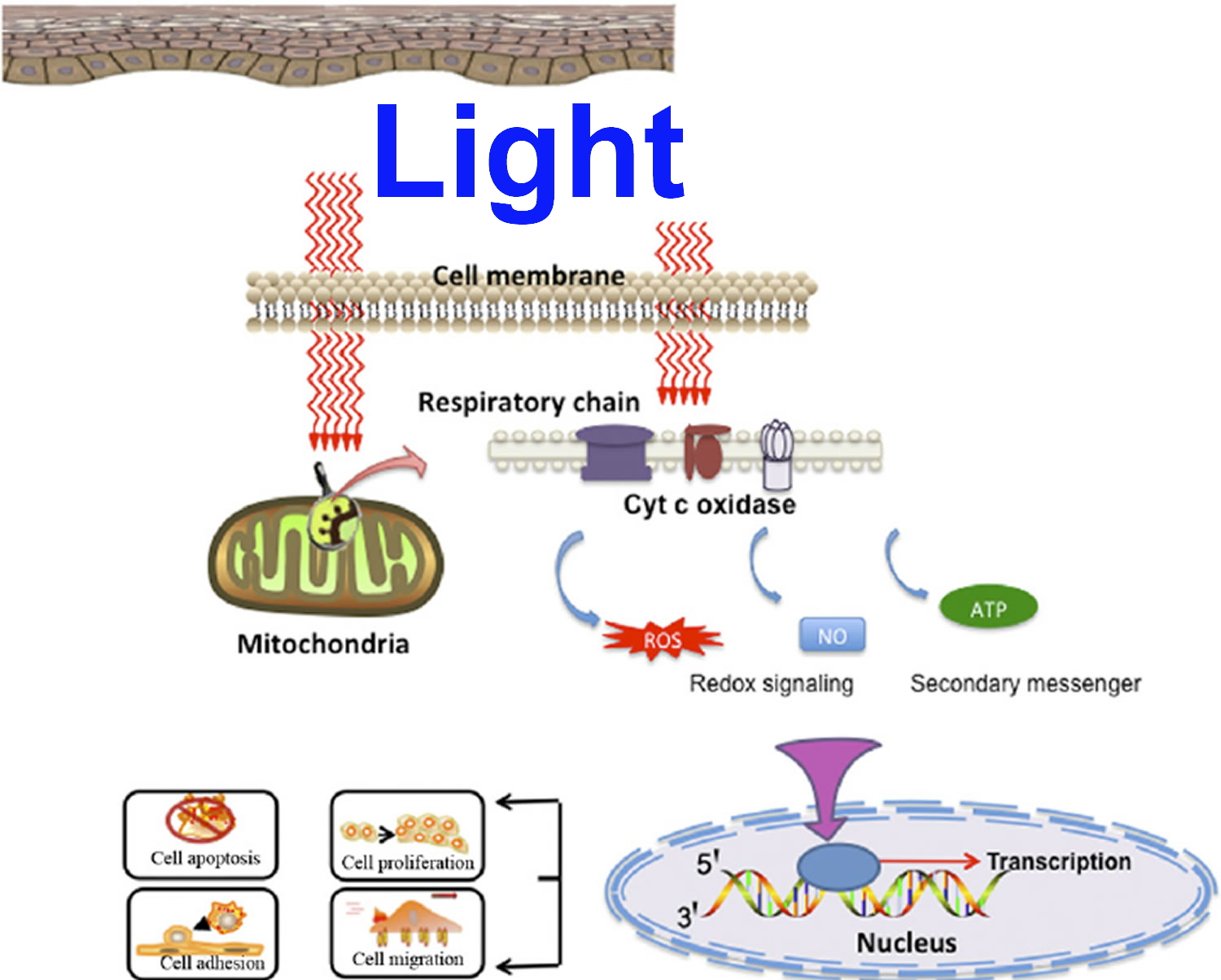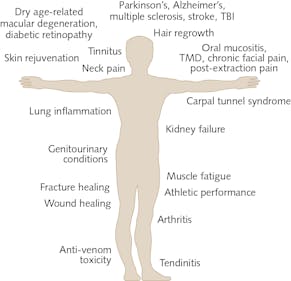The Basic Principles Of Photobiomodulation
Wiki Article
Some Ideas on Photobiomodulation You Need To Know
Table of ContentsThe Photobiomodulation IdeasOur Photobiomodulation DiariesExcitement About PhotobiomodulationThe Main Principles Of Photobiomodulation Indicators on Photobiomodulation You Need To KnowThe Only Guide for PhotobiomodulationGetting The Photobiomodulation To Work
There are no well-known side results of Cold Laser Treatment, if the problem being dealt with is a chronic one, some people might experience a minor rise in their degree of pain. This is however, a short-term reaction that quickly settles and is because of the boost in blood supply to the damaged location and is in fact a sign that recovery is occurring.There is little or no experience throughout treatment. Please contact our pleasant team to talk about the costs of receiving Cold laser Therapy at our technique.
Small, focused lasers can be made use of to target a particular location. These areas commonly line up with the points where acupuncture needles would normally be placed. Essentially, this method of Photobiomodulation Treatment takes the place of acupuncture, making this a wonderful option for anyone that wants the benefits of acupuncture but does not desire to be jabbed with needles (Photobiomodulation).
Get This Report about Photobiomodulation
This approach is optimal for people with muscle pains or joint discomfort in areas that are hard to treat with traditional approaches. This treatment can assist with issues such as arthritis and also various other excruciating problems. Lasers discharge light in a details wavelength that is quickly soaked up into joints and muscular tissues in the body.LED-based PBMT gadgets provide multiple benefits over lasers as they pose no threat to the eyes, can be securely utilized at house, cover a big surface area for enhanced effectiveness and thus a wider series of applications. PBMT gadgets supply both red as well as near-infrared light, which are the wavelengths that have been recognized as a lot of effective in supplying photobiomodulation therapy and also when combined effectively get to and treat both surface as well as deeper tissues in the body.
Light as a corrective and protective treatment for the treatment of injury as well as condition in veterinary medicine has actually generated boosting interest over the last years. This results from various variables, especially the capability to use this method in a non-invasive way that has no destructive side effects to the individual, or negative environmental impacts.
Photobiomodulation - The Facts
4 It may also have potential advantages for infected injuries, where it might boost macrophage feature and also regulate the immune response5 along with possibly having some straight impacts on bacteria. 6 Simple acute wounds that have actually been cleansed might call for just one to three therapy sessions, relying on injury size, before substantial tightening and/or total healing is noted.If no improvements are seen after 3 or 4 treatment sessions with the previously stated beginning dosages, a boost in the amount of total power (in overall joules) delivered at 25% to 50% per session is advised until a considerable reaction is seen. 8 It deserves noting that PBM need to be used after the wound or melt has been cleaned (or debrided) and also prior to the application of any dressings, lotions, or bandages.
Time in between treatment sessions is gradually boosted as the client improves, a typical approach to fixing injuries and also returning to complete function. When it comes to performance pets, long term upkeep therapy as a preventative measure before athletic occasions may additionally be thought about. When treating in vivo, the deepness of the target tissue is of utmost relevance.
Some Known Facts About Photobiomodulation.
an enough amount of light need to get to and be taken in by muscular tissue cells in the injured location(s). A beginning factor for fluences that might be effective, depending upon the dimension of the client and the depth of tissue being dealt with, would certainly be 6-10 J/cm2 up to 20 J/cm2 or higher in many cases.Gores takes place to define that anecdotally, over the past decade because starting PBM for these instances, there has actually been a considerable decline in clinical my blog morbidity in addition to the requirement to do significant medical reconstruction of serpent bite injuries at their facility. This is also constant with the unscientific success reported to this writer by various other coworkers making use of PBM in comparable instances Get More Info throughout the nation.


Excitement About Photobiomodulation
Dr. Miller is a graduate of the University of Tennessee, College of Veterinary Medication. She finished a teaching fellowship in interior medicine, and became certified in canine recovery treatment at the Dog Rehabilitation Institute. Photobiomodulation. She practiced canine recovery, sporting activities medicine, neurological rehabilitation, as well as acupuncture for a number of years before going back to basic method., or have actually seen it glued all over Instagram as It's a hot subject at the my response moment among influencers. What if we told you there was an action up from that? State hello to Photobiomodulation!
What are some various other differences in between Red Light Treatment as well as PBM? Among the most important things to note is that Photobiomodulation is an umbrella term that Red Light Treatment fits under. Within Photobiomodulation there is: Laser, Deep Tissue Laser, LED Light and also Red Therapy Light. Due to the reality that PBM uses longer wavelengths, PBM treatment is completely customisable with a regulated dial to identify the efficiency of red as well as near-infrared light to match every person's wanted results.
8 Simple Techniques For Photobiomodulation
Researchers usually discuss light in terms of its wavelength, which is the length of a wave from one peak to the next. Visible light, which you can see, measures 400 to 700 nm.The wavelength identifies the color and if it can be seen with the naked eye. Light with a wavelength of 650 nm to 700 nm appears red, for example, while light with a wavelength of 450 nm looks blue. Different wavelengths of light also cause various results in the body.
Historically, traffic signal treatment was used in Dermatology clinical methods for dealing with the skin including acne as well as a variety of skin lesions. Red light treatment makes use of light wavelengths determining 600 nm 700 nm (short wavelengths) that penetrate human tissue ostensibly, with a lot of the power absorbed in the first 2 centimeters (CENTIMETERS) of the cells.
Excitement About Photobiomodulation
The unintentional exploration was made due to the fact that of a defective low-level ruby laser which was meant to reveal enhancement in minimizing lumps. The cumulative dosage can be unbelievable, but the family member power per cm2 can remain both stimulatory as well as secure. The bench that the subject lays on may provide 12 joules/cm2 to 500 cm2 of surface area skin on the back as the focal factor of the LED beam of light is correct.Report this wiki page